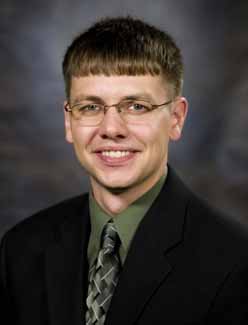Doctoral student awarded prestigious fellowship
Thursday, September 1, 2011

Derek Heeren, a Ph.D. student and research engineer in the Biosystems and Agricultural Engineering Department at OSU, has been awarded a U.S. Environmental Protection Agency STAR Graduate Fellowship to support his dissertation research. His work focuses on the subsurface transport of phosphorus in riparian floodplains, especially on phosphorus leaching at the field scale.
“Derek is an outstanding graduate student and is well deserving of this prestigious award. His research is of great importance, not only to the state of Oklahoma, but also throughout the nation in terms of environmental protection for water and watershed management,” said Dr. Garey A. Fox, Derek’s adviser. “This is a tremendous honor for Derek, the Biosystems and Agricultural Engineering Department and OSU.”
Heeren earned his BS and MS in agricultural engineering at South Dakota State University.
The fellowship provides support for a maximum of three years, usable over a period of five years, at up to $42,000 per year of support. The goal of the program is to “…help ensure that the U.S. meets its current and projected human resource needs in the environmental science, engineering, and policy fields”
Background on Heeren’s study: The potential for P leaching is commonly estimated based on point-measurements of soil test phosphorus (STP) or measurements of the sorption capability of disturbed soil samples representing the soil matrix. However, in the Ozark ecoregion featured in the study, gravel outcrops and macropores (visibly observed in previous research activities) occur on the floodplains. These gravel outcrops can lead to extremely high infiltration rates. For water movement through soil, macropores have been shown to have a large impact on flow and solute transport. Some research has been performed on P leaching in undisturbed soil columns, but relatively few studies on P leaching have been done at the field scale on naturally drained soils. The scale at which P leaching should be investigated (i.e., point, plot, field, and/or watershed), as well as the unique complexities of focused research at each of these different scales, is unknown.
